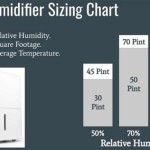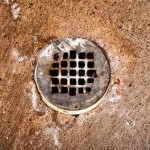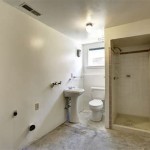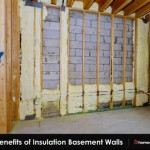Can I Put Carpet On Concrete Basement Floor? A Comprehensive Guide
Installing carpet on a concrete basement floor is a common endeavor for homeowners seeking to improve the comfort and aesthetics of their below-grade living spaces. However, the decision to lay carpet directly on concrete is not without its complexities. Concrete, particularly in basements, is susceptible to moisture and temperature fluctuations, which can significantly impact the longevity and healthfulness of the carpet and the underlying environment. Understanding the potential challenges and necessary precautions is crucial for a successful and sustainable installation.
This article will explore the factors that influence the viability of installing carpet on concrete basement floors, including moisture mitigation strategies, suitable carpet types, and essential installation techniques. The goal is to provide a comprehensive understanding of the process, enabling informed decision-making and minimizing the risk of problems such as mold growth, mildew, and premature carpet deterioration.
Analyzing Moisture Levels in the Concrete Slab
The presence and management of moisture are arguably the most critical aspects to consider when planning to install carpet on a concrete basement floor. Concrete is porous and can absorb moisture from the surrounding soil, hydrostatic pressure, and condensation. Elevated moisture levels can lead to a host of problems, including the degradation of carpet padding, the development of mold and mildew, and the creation of an unhealthy indoor environment.
Before any carpet installation begins, a thorough assessment of the concrete's moisture content is essential. This can be accomplished through various testing methods. A calcium chloride test (also known as a moisture vapor emission rate test) measures the amount of moisture vapor emitted from the concrete slab over a 24-hour period. The results of this test will indicate whether the moisture vapor transmission rate is within an acceptable range for carpet installation. Another option is using a relative humidity (RH) probe test. This involves drilling small holes into the concrete and inserting a probe that measures the relative humidity within the concrete slab. The RH reading will provide insights into the internal moisture content of the concrete.
Acceptable moisture levels vary depending on the type of carpet, padding, and adhesive being used. It is imperative to consult the manufacturers' recommendations for specific thresholds. If moisture levels exceed the acceptable limits, remediation steps must be taken before proceeding with the carpet installation. These steps may involve applying a moisture barrier to the concrete surface, improving ventilation in the basement, or addressing external sources of moisture such as leaky foundations or inadequate drainage.
Ignoring elevated moisture levels can result in significant and costly problems down the line. Mold and mildew growth can not only damage the carpet and underlying materials but also pose health risks to occupants, particularly those with allergies or respiratory sensitivities. Furthermore, excessive moisture can weaken the adhesives used to secure the carpet, leading to delamination and premature wear. Investing in proper moisture testing and mitigation is a fundamental aspect of ensuring a successful and long-lasting carpet installation in a basement environment.
Selecting Appropriate Carpet and Padding Materials
The choice of carpet and padding materials plays a significant role in mitigating the potential risks associated with installing carpet on concrete basement floors. Standard carpet and padding materials may not be suitable for the unique conditions present in a below-grade environment. Selecting materials that are specifically designed to resist moisture and inhibit microbial growth is paramount.
For carpet, synthetic fibers such as nylon, olefin (polypropylene), and polyester are generally preferred over natural fibers like wool. Synthetic fibers are less absorbent and more resistant to moisture damage and mildew. Certain carpet constructions, such as those with a closed-loop design, can also provide enhanced resistance to moisture penetration. Look for carpets with antimicrobial treatments that inhibit the growth of mold, mildew, and bacteria.
The choice of padding is equally important. Avoid traditional felt or fiber padding, as these materials tend to absorb and retain moisture, creating a breeding ground for mold and mildew. Opt for closed-cell foam padding or rubber padding, which are less absorbent and offer better moisture resistance. These types of padding also provide better insulation and cushioning underfoot. Breathable carpet pads that allow for air circulation are also a viable choice as they help to evaporate any trapped moisture.
Consider the overall thickness of the carpet and padding combination. While thicker padding may provide greater comfort, it can also trap more moisture. Strive for a balance between comfort and moisture management. Consult with a flooring professional or a carpet manufacturer to determine the most appropriate materials for your specific basement conditions and desired level of comfort. The combined R-value (thermal resistance) of the carpet and padding can also contribute to the overall energy efficiency of the basement.
Beyond moisture resistance, consider other factors such as durability and stain resistance. Basements are often high-traffic areas, and the carpet should be able to withstand regular use and potential spills. Choosing a carpet with a stain-resistant treatment can further protect against accidental damage and maintain its appearance over time.
Employing Proper Installation Techniques and Maintenance Practices
Even with careful attention to moisture mitigation and material selection, proper installation techniques are crucial for a successful carpet installation on a concrete basement floor. Incorrect installation can compromise the effectiveness of the chosen materials and exacerbate existing moisture problems. Furthermore, ongoing maintenance practices are essential for preserving the integrity of the carpet and preventing the onset of mold, mildew, and other issues.
Before installation, ensure that the concrete surface is clean, dry, and level. Remove any debris, dust, or existing coatings that may interfere with the adhesion of the carpet or padding. Level any uneven areas with a self-leveling compound to create a smooth and uniform surface. If using adhesives, select a moisture-resistant adhesive specifically formulated for concrete floors. Apply the adhesive according to the manufacturer's instructions, ensuring proper coverage and bonding.
Consider installing a subfloor system to create an air gap between the concrete slab and the carpet. This can significantly improve moisture management by allowing air to circulate beneath the carpet and promote evaporation. There are various subfloor systems available, including interlocking tiles and raised platforms. These systems can also provide added insulation and cushioning.
Proper ventilation is essential for maintaining a dry and healthy basement environment. Ensure that the basement is adequately ventilated, either through natural ventilation or mechanical ventilation systems. Dehumidifiers can also be used to reduce humidity levels in the basement, particularly during periods of high humidity. Regularly monitor the humidity levels and adjust the dehumidifier settings as needed.
Regular cleaning and maintenance are crucial for preventing mold and mildew growth. Vacuum the carpet regularly to remove dirt, dust, and debris. Promptly address any spills to prevent them from soaking into the carpet and padding. Consider using a carpet cleaner specifically designed for synthetic fibers and antimicrobial treatments. Avoid using excessive amounts of water when cleaning the carpet, as this can contribute to moisture buildup. Allow the carpet to dry thoroughly after cleaning.
Periodically inspect the carpet for signs of moisture damage, such as discoloration, stains, or a musty odor. If any problems are detected, address them promptly to prevent them from spreading. This may involve removing the affected area of carpet and padding, treating the underlying concrete with a mold and mildew remover, and replacing the damaged materials with new, moisture-resistant products. By adhering to proper installation techniques and implementing proactive maintenance practices, homeowners can significantly extend the lifespan of their carpet and maintain a healthy and comfortable basement environment.

How To Carpet A Basement Floor Diy Family Handyman

Carpet In Basements The Issues Solutions And Alternatives Greenbuildingadvisor

How To Install Carpet On Concrete

Basement Modular Carpet Tiles With A Raised Lock Together Base

Installing Peel And Stick Carpet Tiles On Concrete Diy Exquisitely Unremarkable

How To Paint An Area Rug In The Basement

Is Basement Carpet A Bad Idea What Are The Options

Basement Sub Floor Matting Options In Portland Bangor Rochester Maine Subfloor Systems Installed Me

Can You Put Floating Carpet Tiles Over Tile Or Concrete Ideas

How To Damp Proof Concrete Floors Permagard
Related Posts







